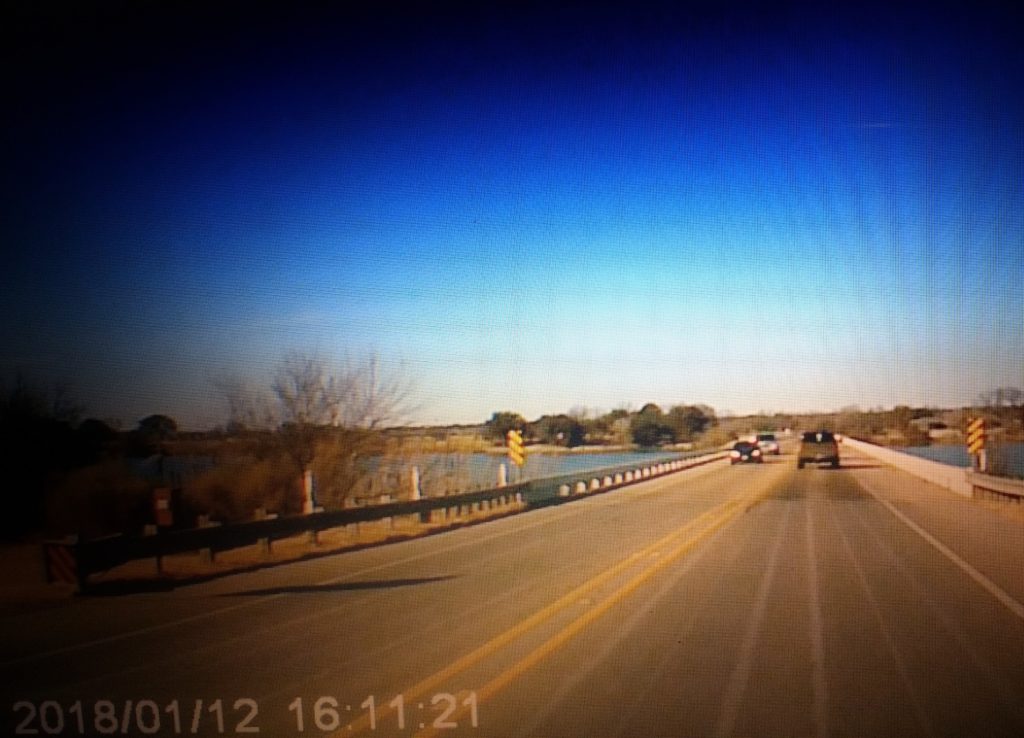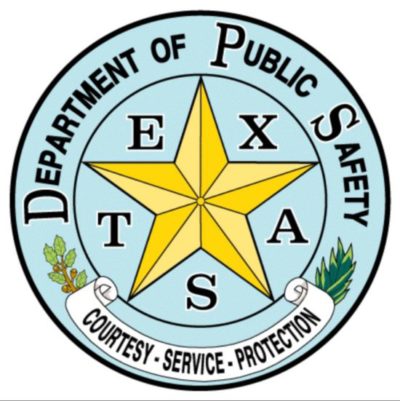Have you noticed the lines on some roadways around town?
That’s TxDot’s brine solution that’s being used to battle any future ice on our roads. The solution is supposed to prevent ice from forming in the applied areas for up to a week and can not be washed away by any precipitation or worn away by traffic. This is not a fail proof method but it definitely makes a difference when it counts! However, we suggest that you still travel the roads with caution during any inclement weather.
Here’s more information taken from TxDot’s Snow and Ice Control Operation Manual on what exactly is causing those white tinted lines around town:
Brine is a solution of salt (Sodium Chloride-NaCl) in water. There are several sources of salt for brine applications: solar salt, rock salt, natural brines and oilfield brine. Rock salt exists naturally across the world and is mined for use in numerous industries. Brine occurs naturally across the world and sometimes can have salt concentrations more than five times greater than the salt content of average sea water, but can also contain other dissolved constituents of elements, ions and molecules. One example is the Great Salt Lake. All natural brines should be tested prior to widespread use due to possible high concentrations of trace metals. Manufactured brine occurs in water in deep salt formations, not oil or gas. Oilfield Brine is a byproduct of oil and gas test and production wells. These wells may produce hundreds of barrels of brine for every barrel of oil. Brine solutions range from about 3.5% salt content (a typical concentration of seawater) up to about 26% (a typical saturated solution).
TxDOT has recently taken a proactive approach toward using brine across the state for anti-icing and for de-icing purposes. By purchasing and placing brine makers, 500 cubic yard salt barns and additional storage tanks for brine water at strategic maintenance section yards, TxDOT will lower anti-icing and de-icing costs dramatically over the current practice of using dry and liquid chemicals. A map link on the Texas Snow and Ice Plan shows the locations of all brine makers, brine storage tanks, salt sheds and equipment for snow and ice use.
Anti-icing should be the first in a series of treatment strategies for winter storms. Anti-icing is a proactive approach and one of the most cost-effective and environmentally safe practices in winter road maintenance. Anti-icing, when performed correctly, prevents ice and snow from bonding to the pavement, thus achieving one of the most important goals of winter storm management. Once frozen precipitation has bonded to the pavement, the cost to break that bond in terms of materials, equipment and labor increases substantially.
Brine can be used for anti-icing or de-icing, but its optimal use is in anti-icing operations. Brine produces similar results as other anti-icing chemicals, but at a fraction of the cost. Brine can be applied with typical TxDOT equipment, such as modified herbicide trucks. Brine is applied at rates ranging from 30-60 gallons per lane mile at a 23.3 percent solution. The eutectic temperature of salt brine is -6 degrees Fahrenheit at a concentration of 23.3 percent. Brine is applied with stream nozzles similar to other liquid anti-icing chemicals.
TxDOT is using brine on a wider scale due to the cost and ease of use. Storage is also easier since brine does not have to be re-circulated when stored for long periods




0 Comments